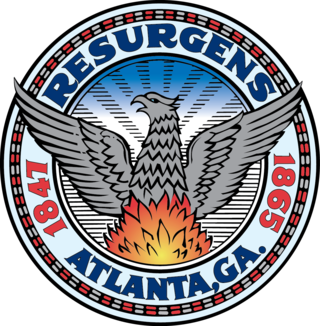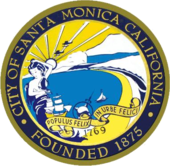
The administrative divisions of New York are the various units of government that provide local services in the American state of New York. The state is divided into boroughs, counties, cities, towns, and villages. They are municipal corporations, chartered (created) by the New York State Legislature, as under the New York State Constitution the only body that can create governmental units is the state. All of them have their own governments, sometimes with no paid employees, that provide local services. Centers of population that are not incorporated and have no government or local services are designated hamlets. Whether a municipality is defined as a borough, city, town, or village is determined not by population or land area, but rather on the form of government selected by the residents and approved by the New York State Legislature. Each type of local government is granted specific home rule powers by the New York State Constitution. There are still occasional changes as a village becomes a city, or a village dissolves, each of which requires legislative action. New York also has various corporate entities that provide local services and have their own administrative structures (governments), such as school and fire districts. These are not found in all counties.
The Walsh Act is a piece of legislation in the U.S. state of New Jersey that permits municipalities to adopt a non-partisan commission form of government. The legislation was signed by Governor of New Jersey Woodrow Wilson on April 25, 1911. The commissions in Walsh Act municipalities are composed of either three or five members elected for four-year concurrent terms. The commissioners also serve as department heads in addition to their legislative functions. The commissioners elect one commissioner as mayor, who serves as chair of the commission. With few exceptions, Walsh Act mayors have no powers over and above their fellow commissioners, and are only responsible for their specific department(s).

Honolulu City Council is the legislature of the City and County of Honolulu, the capital and largest city in Hawai'i, the fiftieth state in the United States. The City and County of Honolulu is a municipal corporation that manages government aspects traditionally exercised by both municipalities and counties in other states. Each of the nine members of its city council is elected to a four-year term and can serve no more than two consecutive terms. Council members are elected by voters in nine administrative districts that, since 1991, are reapportioned every ten years. Like the Honolulu mayor, members of the city council are elected via nonpartisan elections.

The Council of the District of Columbia is the legislative branch of the government of the District of Columbia. As permitted in the United States Constitution, the district is not part of any U.S. state and is overseen directly by the federal government.
City commission government is a form of local government in the United States. In a city commission government, voters elect a small commission, typically of five to seven members, typically on a plurality-at-large voting basis.
The Winnipeg City Council is the governing body of the city of Winnipeg, Manitoba, Canada. The Council is seated in the Council Building of Winnipeg City Hall.
Massachusetts shares with the five other New England states a governmental structure known as the New England town. Only the southeastern third of the state has functioning county governments; in western, central, and northeastern Massachusetts, traditional county-level government was eliminated in the late 1990s. Generally speaking, there are four kinds of public school districts in Massachusetts: local schools, regional schools, vocational/technical schools, and charter schools.
The Optional Municipal Charter Law or Faulkner Act provides New Jersey municipalities with a variety of models of local government. This legislation is called the Faulkner Act in honor of the late Bayard H. Faulkner, former mayor of Montclair, New Jersey, U.S., and former chairman of the Commission on Municipal Government.
A board of supervisors is a governmental body that oversees the operation of county government in the U.S. states of Arizona, California, Iowa, Mississippi, Virginia, and Wisconsin, as well as 16 counties in New York. There are equivalent agencies in other states.
The Government of Denver makes up the public sector of the City and County of Denver, Colorado.

The Buffalo Common Council is the legislative branch of the city of Buffalo, New York government. It is a representative assembly, with one elected member from each of nine districts: Niagara, Delaware, Masten, Ellicott, Lovejoy, Fillmore, North, University, and South. In the past, the Common Council also had as many as five at-large members and a Council President who were elected citywide. Each council seat is elected for a four-year term, with elections occurring during off-years, between mid-term elections and presidential elections.

Buffalo, New York's government is run by a democratically elected mayor and council of nine members.

The government of Portland, Oregon is based on a city commission government system. Elected officials include the mayor, commissioners, and a city auditor. The mayor and commissioners are responsible for legislative policy and oversee the various bureaus that oversee the day-to-day operation of the city. Portland began using a commission form of government in 1913 following a public vote on May 3 of that year. Each elected official serves a four-year term, without term limits. Each city council member is elected at-large.
The Department of City Planning (DCP) is the department of the government of New York City responsible for setting the framework of city's physical and socioeconomic planning. The department is responsible for land use and environmental review, preparing plans and policies, and providing information to and advising the Mayor of New York City, Borough presidents, the New York City Council, Community Boards and other local government bodies on issues relating to the macro-scale development of the city. The department is responsible for changes in New York City's city map, purchase and sale of city-owned real estate and office space and of the designation of landmark and historic district status. Its regulations are compiled in title 62 of the New York City Rules. The most recent Director of City Planning Marisa Lago resigned in December, 2021 following her confirmation as Under Secretary for International Trade at the United States Department of Commerce.

The Government of Saginaw, Michigan is a council-manager form of government with a mayor selected from members of the city council by members of the city council. Saginaw is classified as a home rule city under the Michigan Home Rule Cities Act which permits cities to exercise "home rule" powers, among which is the power to frame and adopt its own city charter which serves as the fundamental law of the city, in a manner similar to a constitution for a national or state government. The present charter was adopted in 1935 and took effect on January 6, 1936.
Local government in New Jersey is composed of counties and municipalities. Local jurisdictions in New Jersey differ from those in some other states because the entire area of the state is part of a municipality; each of the 564 municipalities is in exactly one county; and each of the 21 counties has more than one municipality. New Jersey has no independent cities, nor consolidated city-counties.

The Atlanta City Council is the main municipal legislative body for the city of Atlanta, Georgia, United States. It consists of 16 members: the council president, twelve members elected from districts within the city, and three members representing at-large posts. The city council is the legislative branch of the Atlanta city government.
Local government in Pennsylvania is government below the state level in Pennsylvania. There are six types of local governments listed in the Pennsylvania Constitution: county, township, borough, town, city, and school district. All of Pennsylvania is included in one of the state's 67 counties, which are in total subdivided into 2,560 municipalities. There are currently no independent cities or unincorporated territories within Pennsylvania. There is only one incorporated town in Pennsylvania, Bloomsburg.

The government of the City of Los Angeles operates as a charter city under the charter of the City of Los Angeles. The elected government is composed of the Los Angeles City Council with 15 city council districts and the mayor of Los Angeles, which operate under a mayor–council government, as well as several other elective offices. Under the California Constitution, all judicial, school, county, and city offices, including those of chartered cities, are nonpartisan. The current mayor is Karen Bass, the current city attorney is Hydee Feldstein Soto and the current city controller is Kenneth Mejia.

The government of Columbus, Ohio, headquartered at Columbus City Hall in Downtown Columbus, is organized into a mayor-council system. The mayor is responsible for the administration of city government. The Columbus City Council is a unicameral body consisting of nine members elected or appointed at-large. The city has numerous government agencies, responsible for public education, health, and safety; emergency services; recreational facilities; sanitation; water supply; and welfare services.











